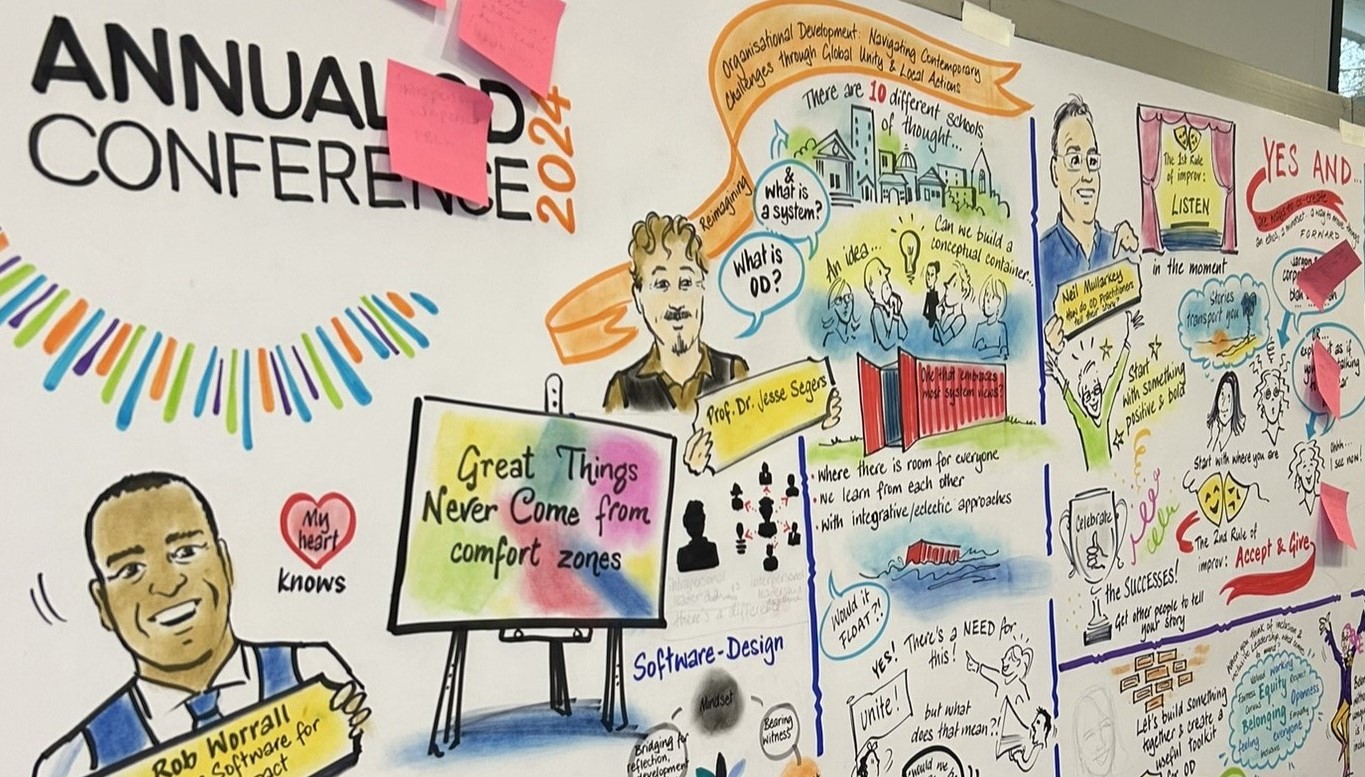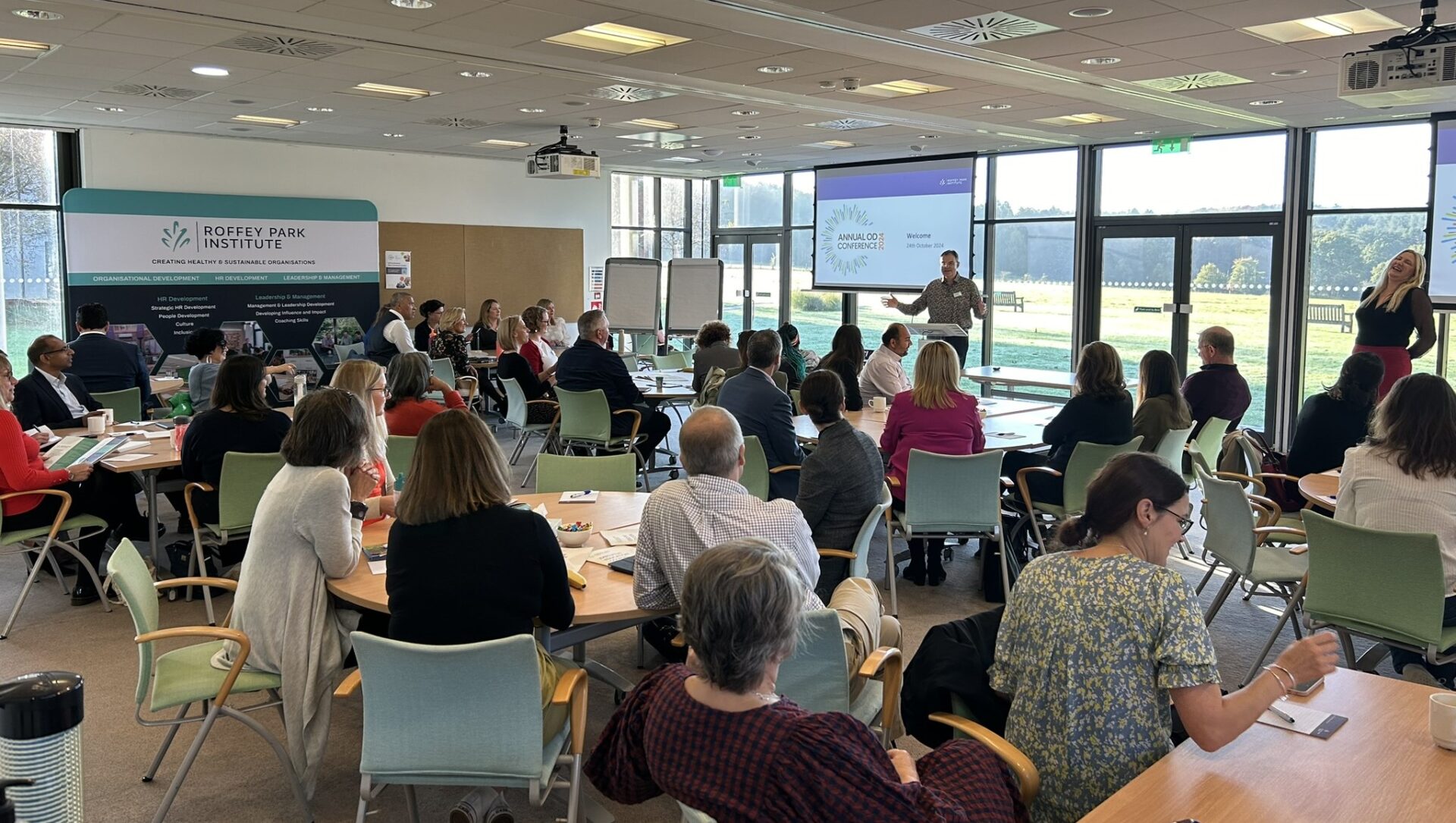Recently I had the pleasure of facilitating a series of workshops with a group of experienced HR leaders to support them with a nascent Organisation Design project. Roffey Park’s approach to learning is more experiential and dialogue based than theoretical, so conversations often turn to the realities of putting new skills in to practise.
But what this group was really interested in, was why things can go sideways and what to do to avoid common mistakes. “That would make a great article”, I said. “Can you write it?”’ they replied…
Not establishing clear design criteria
As obvious as it may sound, Organisation Design work is a design process. Yet you might be surprised how many initiatives fail to deliver on expectations, as the expectations of exactly what is to be achieved were not adequately specified at the outset.
For this reason, establishing robust design criteria is perhaps the most crucial task in the organisation design process. Taking the organisation’s strategic priorities as the parameters for the design, both the external market lens and the internal one, allows business leaders and organisation design teams to identify the critical organisational capabilities that must be developed to deliver on those goals.
These capabilities provide the design with its purpose. They identify the technical and behavioural skills the organisation (or whatever the target area of the design is within the business) must create or improve to effectively deliver on its strategic priorities.
Common design criteria include; making parts of the structure more customer centric, enhancing processes for collaboration across functions to improve problem solving, creatin greater accountability for high performance at middle-manager level, and so on.
Clear design criteria remove ambiguity over what the new organisation design must do well and helps stakeholders to reach agreement on the best opportunities to improve performance.
If, as is common, you find yourself entering an organisation design process where this step has been skipped or is not grounded on robust assessment; go back and do it. This makes for difficult conversations with executive sponsors but to press forward without a clear purpose invites far more difficult conversations further down the line.
Focusing on too many changes
Deciding to tackle too many challenges or opportunities through an organisation redesign project is also a pitfall to avoid. In any operating model review you are likely to find several areas that may need remediation to bring them in to line with the aims of the strategy, or long-term business sustainability ambitions.

Less is more. Or more accurately, the right few are best. Choosing a small number of strategic capabilities to disproportionately invest the limited time, attention, and resources available in to, is the way to go. Focus on the areas that will create the most value because they are the most important to your future success. This avoids diluting the aims of the organisation design by not only taking on too much, at the risk of not achieving it, but also keeps focus on what is important.
From a change leaders’ perspective that makes for a very compelling vision and narrative for the ‘why’ of an organisation design project, allowing people to understand the big picture and commit to it.
Not thinking beyond structure
The pitfall of all pitfalls. Ask any internal or external org design consultant for their experience where restructuring is confused for org design and you might want to ensure you are in a comfortable chair.
An organisations structure, represented in its organisational chart or organogram, is a visual representation of who is responsible for what work. Typically arranged in a hierarchy an organisational chart depicts the shape of an organisation, the way it has chosen to allocate, group, connect and manage the collective sum of activities to be competed to produce its products or services, in service of its overarching purpose; why the organisation exists in the first place.
Structure is what Nadler and Tushman (1980)* labelled the ‘formal’ organisation in their seminal work.
Organisation design decisions concerning structure are about how best to combine and configure roles, teams, managerial and leadership layers, business units, divisions, and geographies in to the most efficient and effective form to not only do quality work but to ensure an organisation is flexible enough to adapt to any change.
But to focus on structural change alone, or predominantly, in any organisation design process is to neglect the wider organisational system and the interconnectedness of structure to both culture and performance. Structure is only one important part of an organisations operating model and changes to it should not be made without considering the intended and unintended consequences on human motivation and behaviour.

Because structural change is also a vehicle to create, nurture and disrupt relationships. To distribute power and authority and effect the political and cultural dynamics at play in any organisation with skill and intent. Structural changes can affect who reports to who, where responsibility and budgets sit, the authority inferred by a job title, what ‘level’ your role is and the perceptions that carries.
Re-structuring decisions made based on individuals, rather than tasks to be done and capabilities to be built, can send out loud signals about leadership intentions and integrity – deliberately or almost always inadvertently. The work of organisation designers is not to make structural decisions, but to guide the hands that do towards the best structure for the strategy, with a great deal of insight into all the other factors too.
Sticking to a model
As the saying goes, all models are wrong, but some are useful. Adopting a guiding model or approach to organisation design work is highly recommended, but best practise tools and methods should be treated as valuable guidance and come with instructions to modify as appropriate.
Whether it is the language (too academic or abstract?), the project phases (not enough of too many) or the emphasis on certain elements of an operating model (all about process, lacking details on people for instance) it is important to adapt any prosed one-size-fits-all method to create shared understanding, inform and motivate your key stakeholders towards the best possible options for a successful organisational design.
* David A. Nadler, Michael L. Tushman, A model for diagnosing organizational behavior, Organizational Dynamics, Volume 9, Issue 2, 1980, Pages 35-51.





